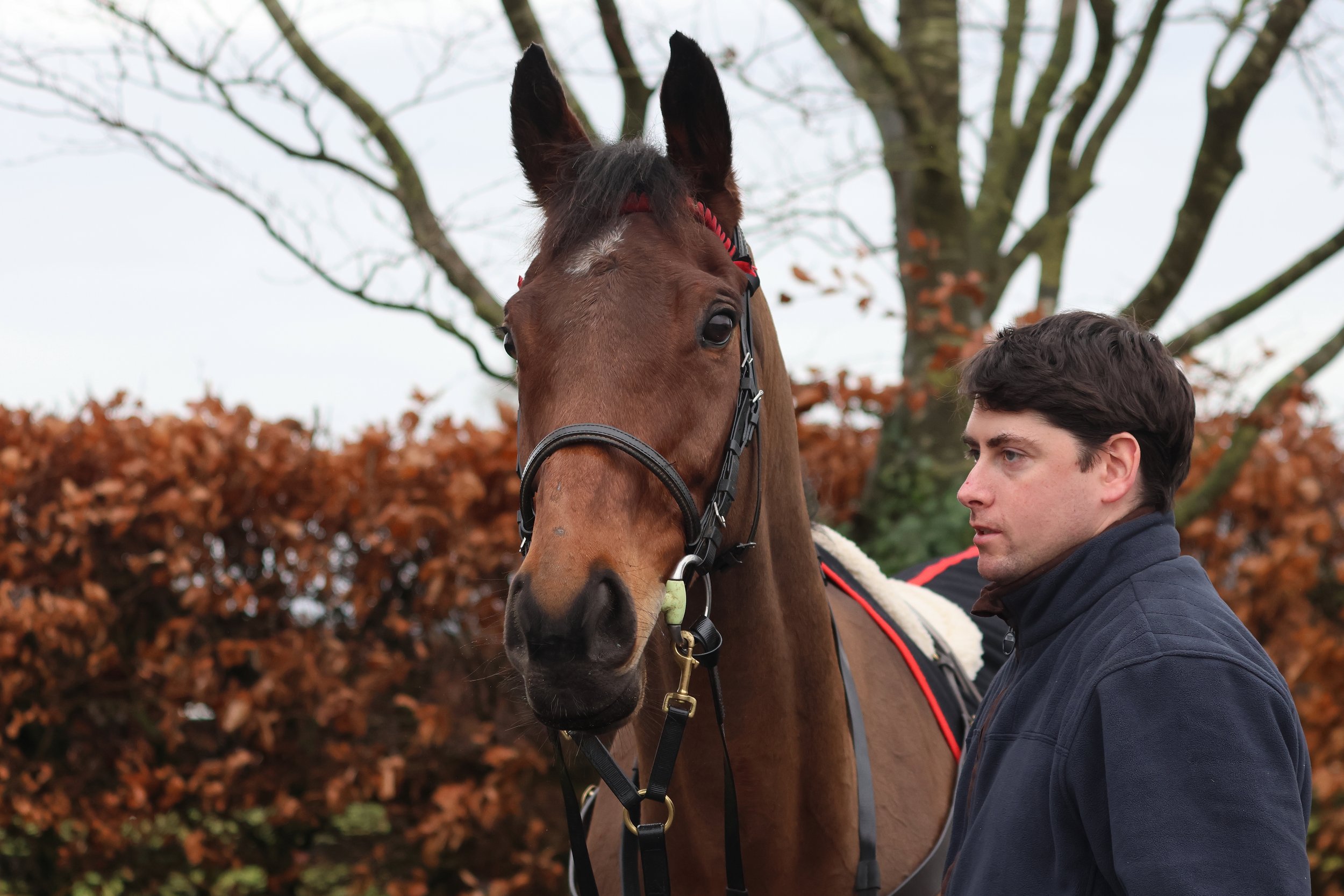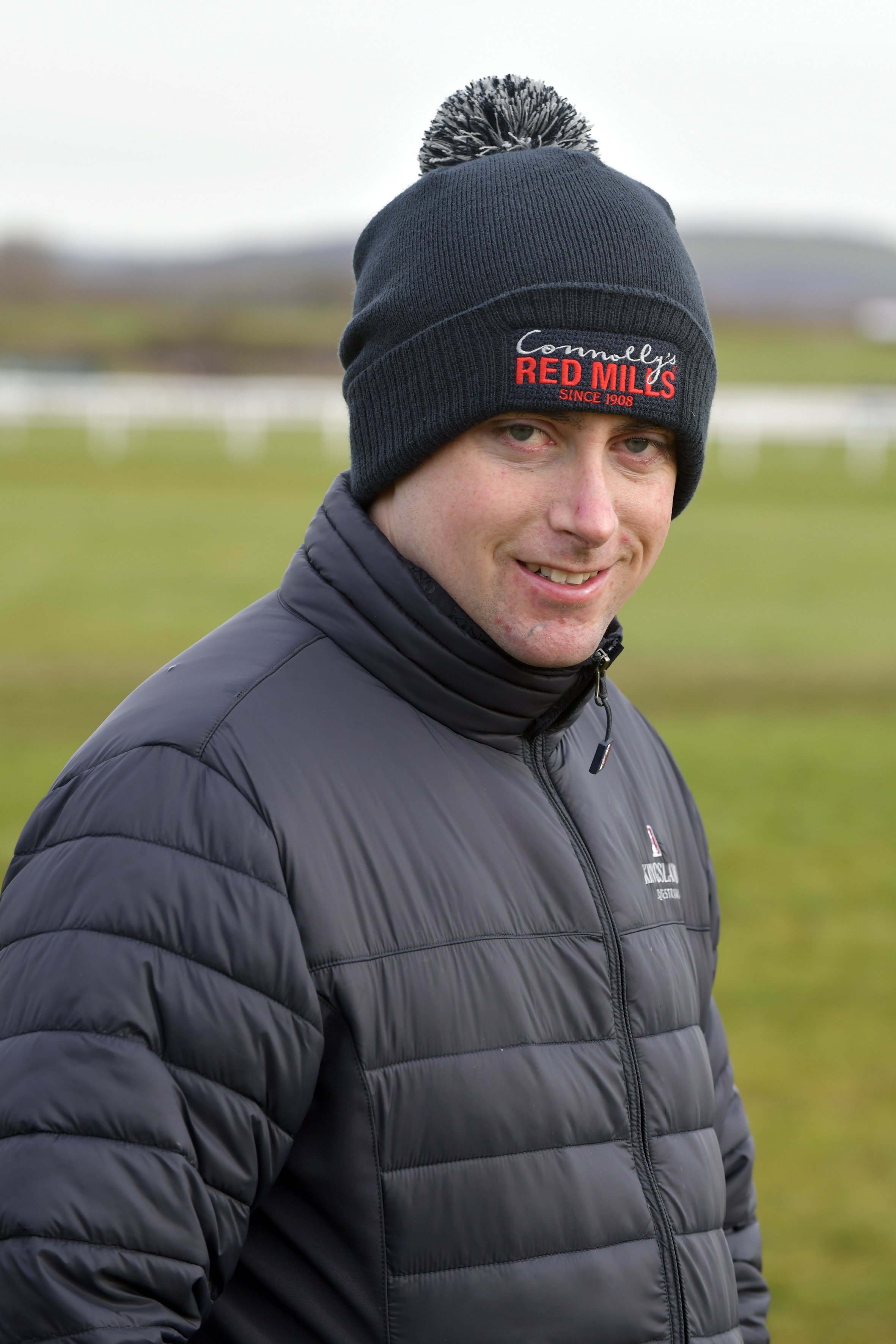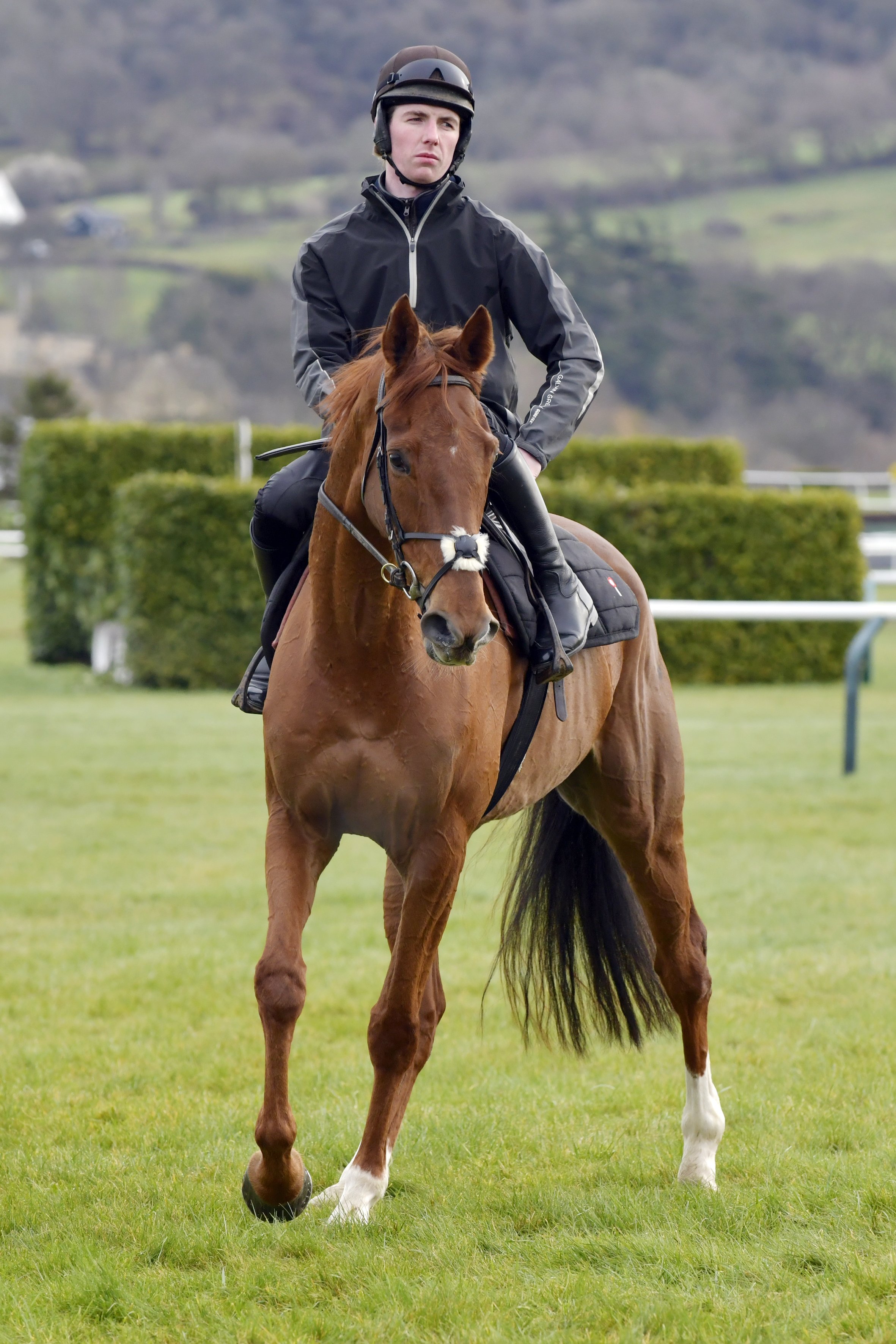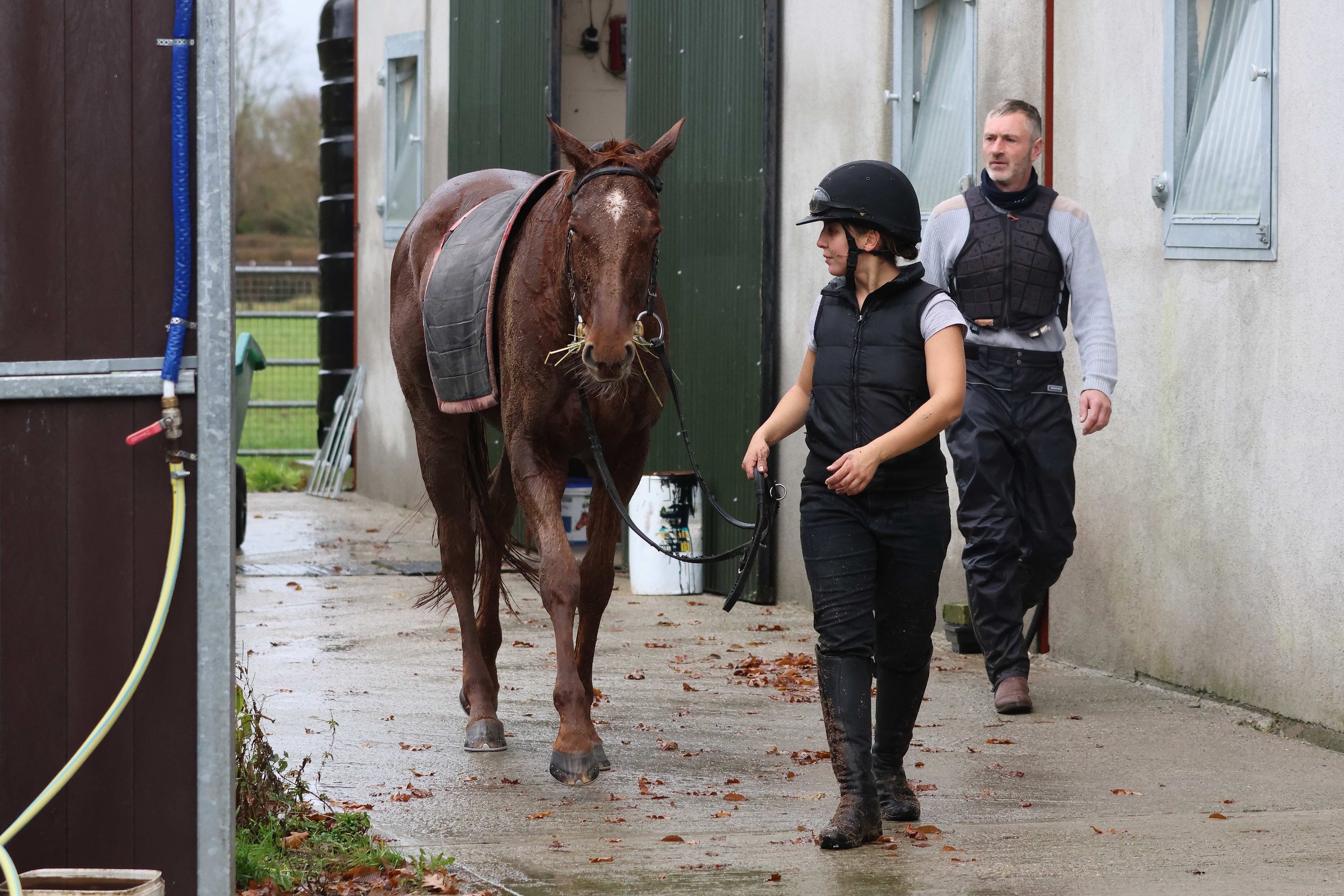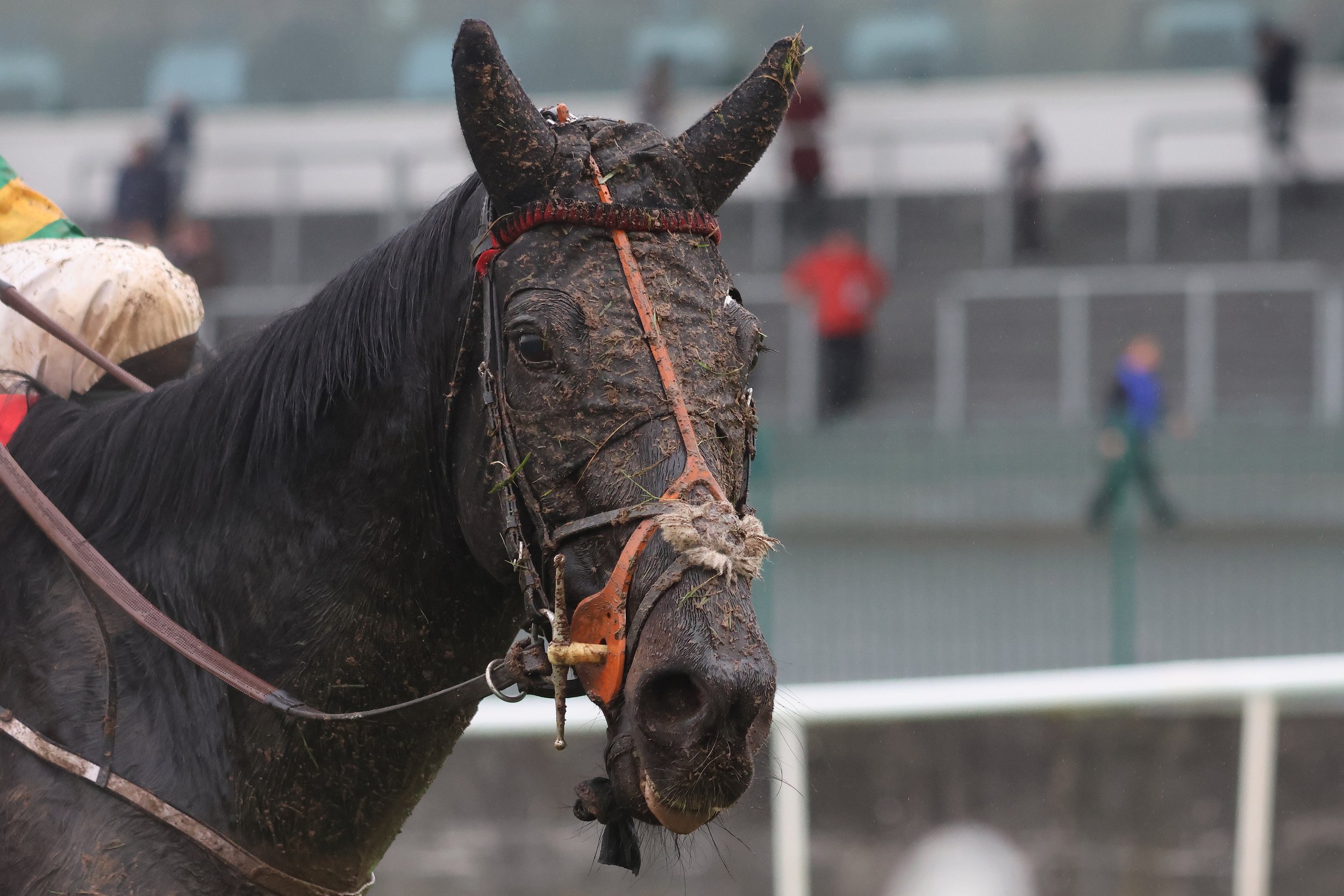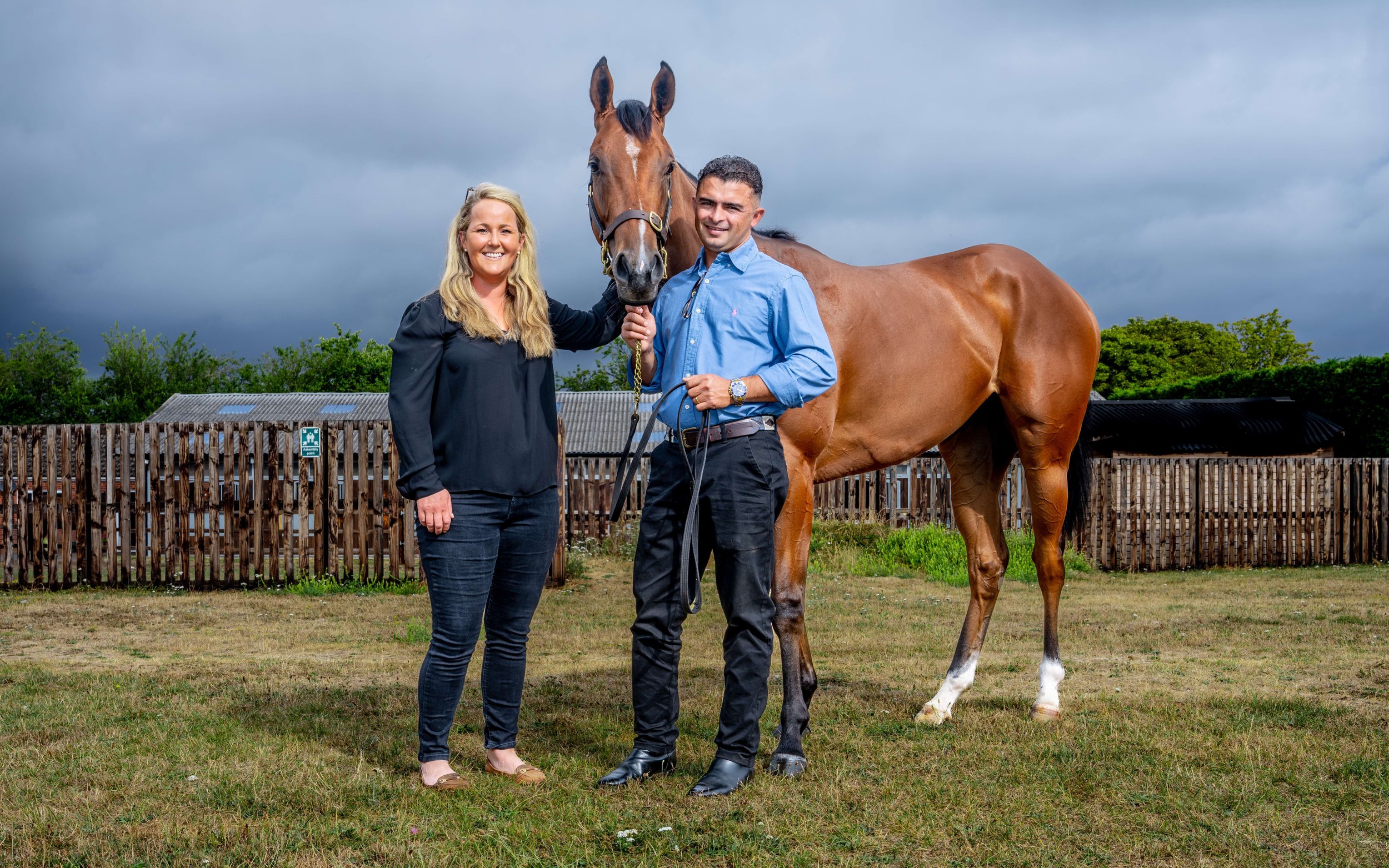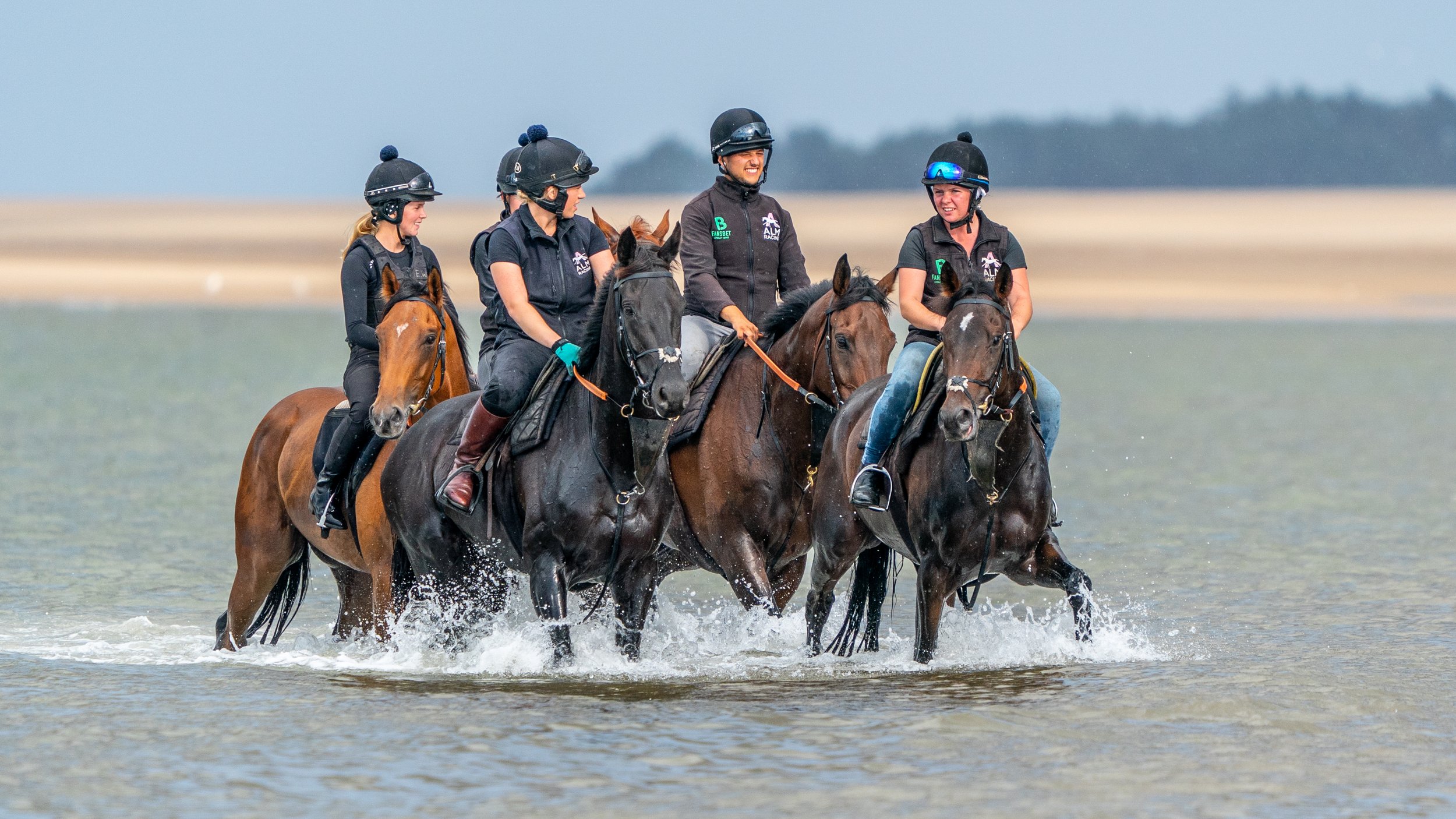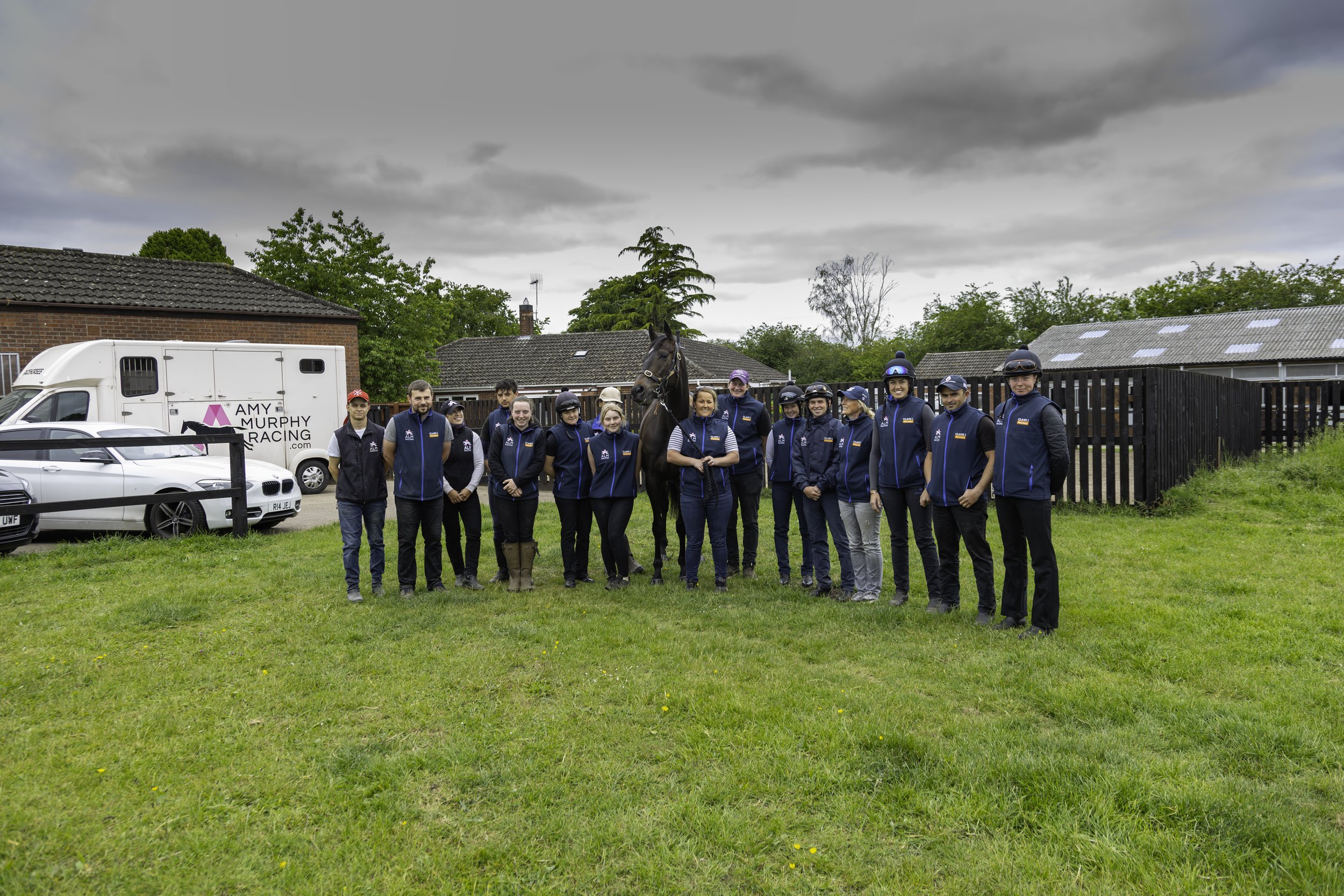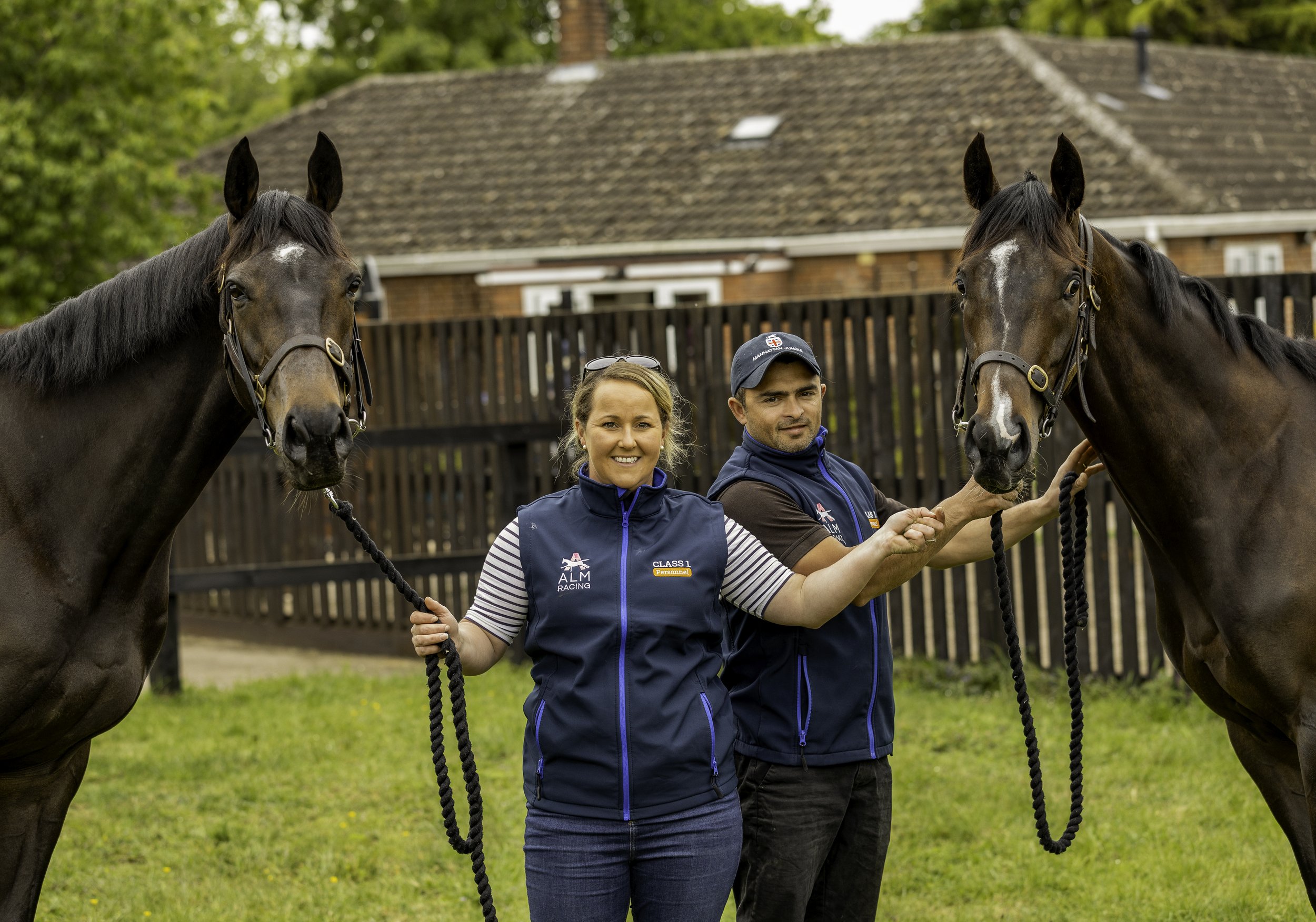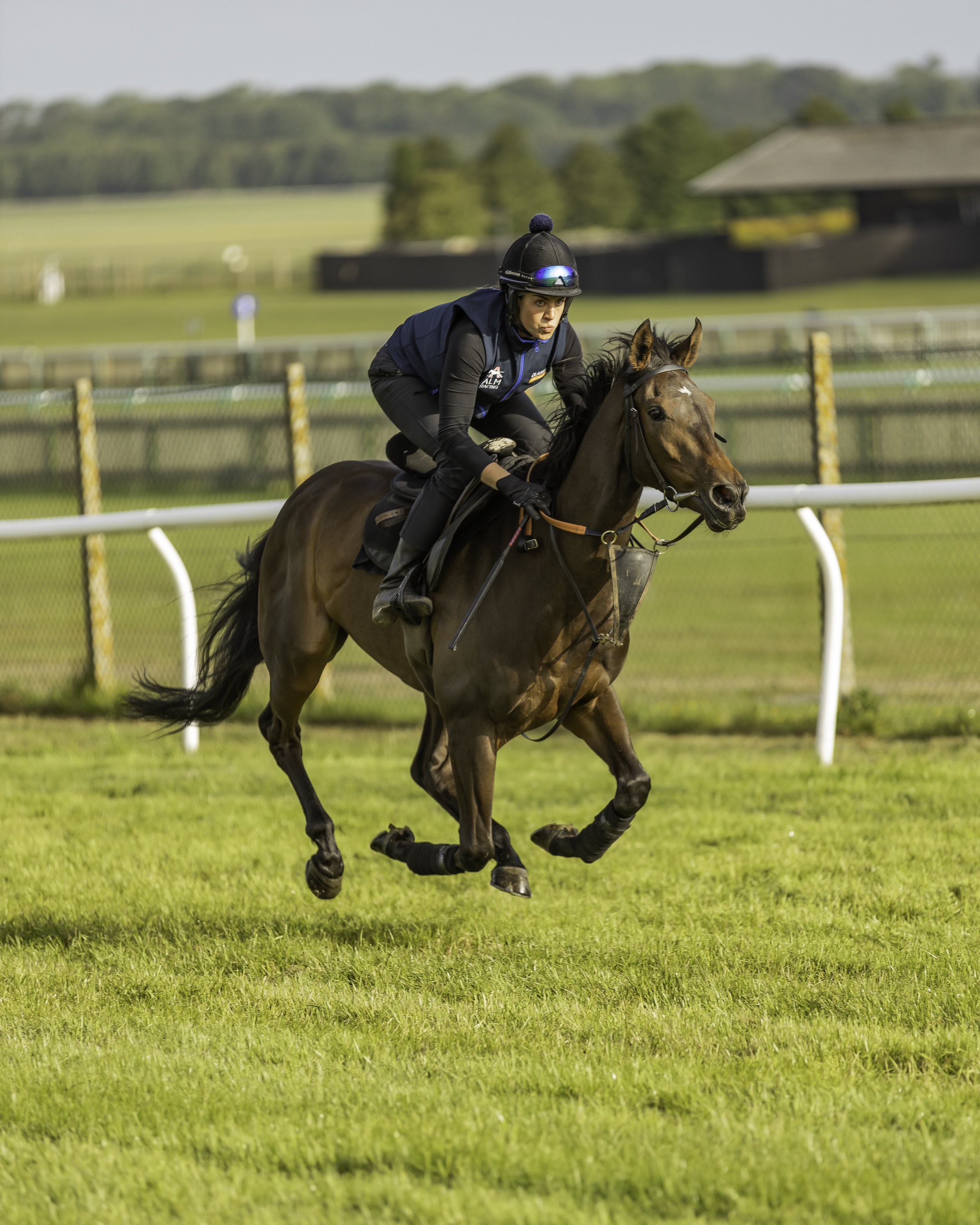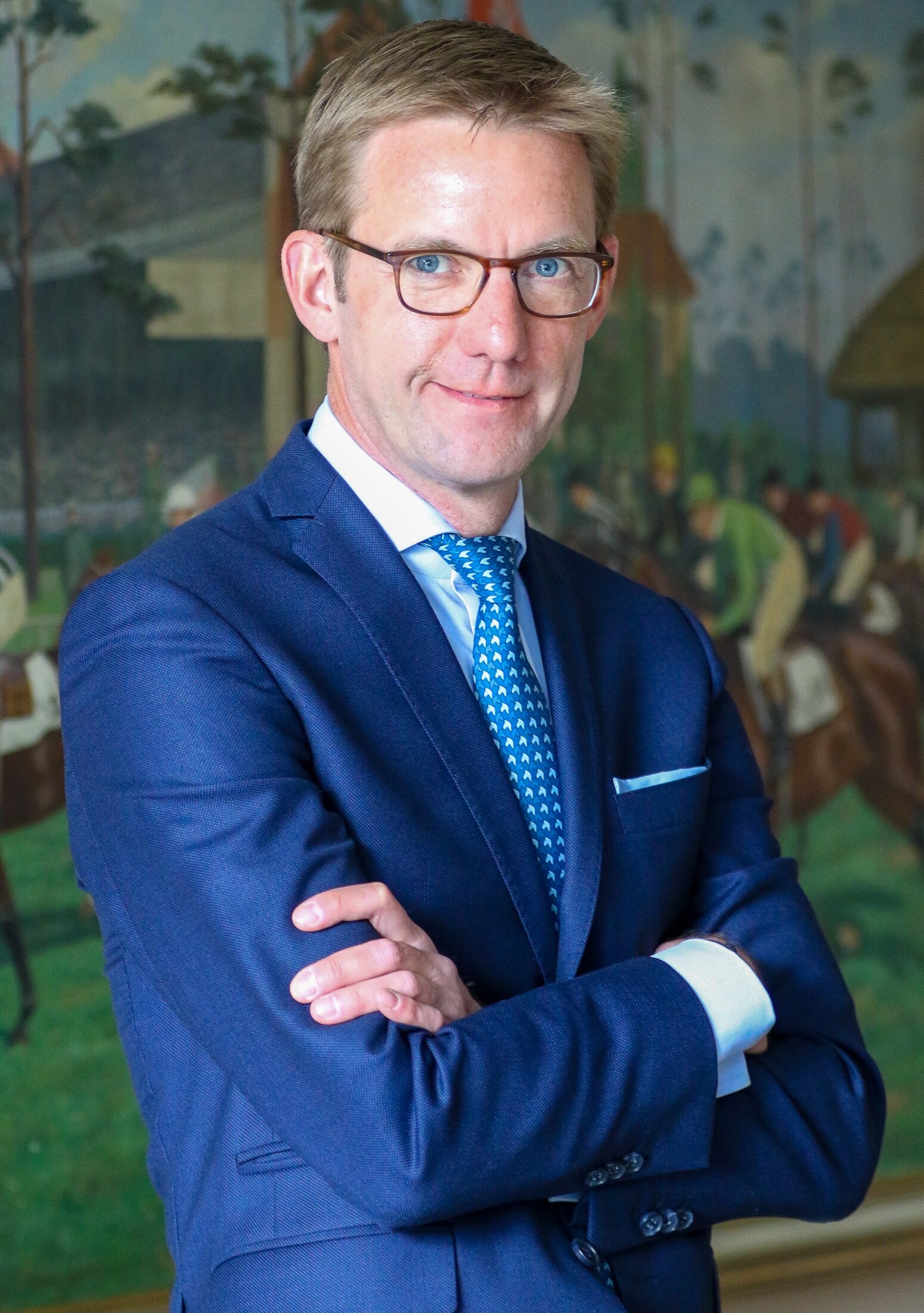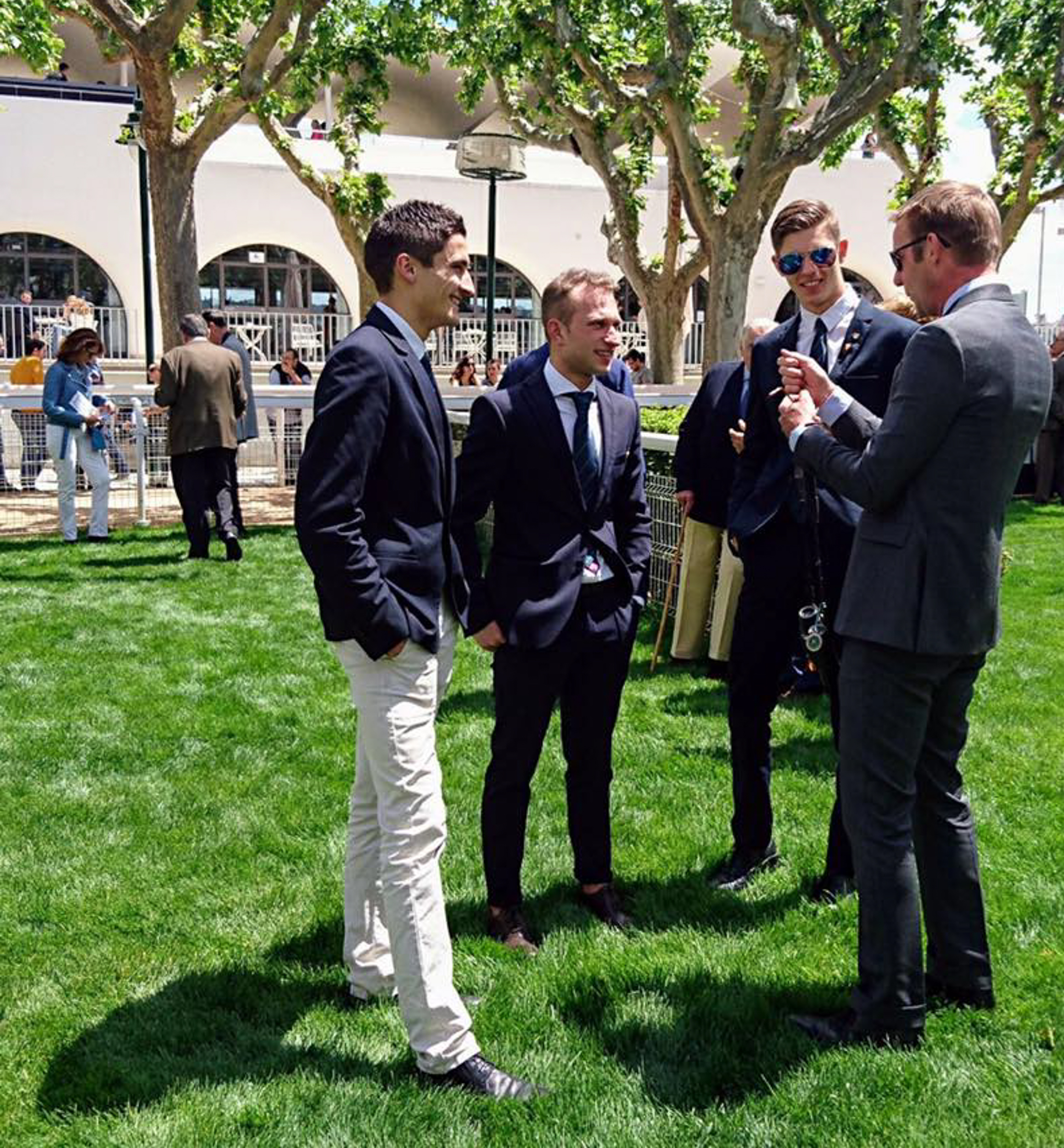Emmet Mullins - the Irish National Hunt trainer who has had no shortage of success - a common trait in the Mullins clan!
Article by Daragh Ó Conchúir
Emmet Mullins possesses the sense of mischievousness that is common in many of the Mullins clan, and there are times when one wonders if it might be a contributory factor in his approach to training racehorses. Or at least his race planning.
We know from a significant sample of more than eight years as a trainer, that Mullins doesn’t throw darts without having given them due consideration. It’s just that his way of getting to the double is more Mensur Suljoviç than Michael van Gerwen. Convention is a constraint he sees no sense in burdening himself with.
So, it is not just plucking outlandish plans out of the ether. That would be idiotic and Mullins is no idiot. He is not unaware that he might be doing something others would not consider however, and when he delivers with an apparently off-kilter plot, he most definitely gets a kick out of it.
Examples of eschewing custom? Landing a listed three-year-old fillies’ hurdle race in Auteuil in 2019 with Fujimoto Flyer, acquired as a yearling on a trip to Japan two years previously. Scoring in a Grade 2 three-year-old hurdle race at the same venue last year with McTigue.
Winning a Grade 1 novice chase at Punchestown last April with Feronily, a horse having his second ever run over fences, just a month after shedding his maiden hurdle status, having been given his debut over both national hunt disciplines at graded level. That elite Punchestown triumph was less than five months removed from the Getaway gelding winning a point-to-point on his first ever public appearance at Rathcannon.
How about preparing ten-year-old The Shunter to bag the £103,080 first prize in the Cesarewitch at Newmarket last October? In March 2021, the same horse plundered a £100,000 bonus on offer for any winner of the Morebattle Hurdle that subsequently won at the Cheltenham Festival, doing so over fences in the Plate.
And then there’s capturing the Grand National with Noble Yeats in 2022, the first seven-year-old to be victorious in the Aintree feature since Bogskar, 82 years previously. And that came just 14 months after running in a bumper, 13 from obliging in his maiden hurdle.
For the most part, these aren’t campaigns his uncle Willie would consider and he is the most successful trainer in jumps racing. That said, when it comes to campaigning internationally at least, Willie has been all over the world and taken a punt in places like Nakayama and Merrano, and his own father Paddy (Emmet’s grandfather) did it before him, winning the $750,000 Grabel International Hurdle at Dueling Grounds – now Kentucky Downs – in 1990.
So there is a bit of nature in the ambition, the refusal to be hemmed in by the norm. He’s even had a runner in an Irish Derby, legging up Rachael Blackmore on King Of The Throne in 2020. But certainly, he has taken pioneering thinking to another level. It is his oeuvre. It takes a lot of confidence but the self-assurance is well placed. The CV tells us the methods produce results at a sustained and very exalted level.
For all that, and despite an average strike rate of around one in five over jumps in Ireland since he began in 2015, 28% over jumps in Britain over the same period (four from six at the time of writing this season alone) and a career high eight winners on the flat in Ireland this year (15% SR). Success for the Closutton 34-year-old – his 30 boxes are located at the HQ of his father, George’s equine transport business and next door to the gallops used by Uncle Willie to condition his legion of champions –is primarily about getting horses sold.
Sometimes they stay in the yard, which is the case if JP McManus gets involved as he has done on a number of occasions with The Shunter, Filey Bay, So Scottish, Corbett’s Cross and Feronily, and with Noble Yeats after the Waley-Cohens acquired the subsequent Grand National hero.
Most of them don’t though, particularly the flat horses, with a global market. Of the jumpers, McTigue is one of the more recent to have been bought to race in America.
In an interview in last year’s Irish Racing Yearbook, Mullins said he wasn’t good enough to be a jockey, even though he was a Cheltenham Festival winner in the Martin Pipe Conditional Jockeys’ Hurdle on Sir Des Champs for Willie in 2011.
He won a graded novice chase on the same horse at Limerick the following December and then two years later at the same meeting, was entrusted with the responsibility of steering Faugheen around in a graded novice hurdle. But he couldn’t see himself having enough of those sorts of days.
“I didn’t want to be mediocre. Move on to the next thing and do better,” he explained in that feature.
So he retired at 24, just as his younger cousin David did, having won a Grand National as a teenager. They know their own minds, the Mullins boys.
That independent streak is evident in his second career. Being given the responsibility by Willie of travelling with Blackstairmountain to Japan and overseeing the eight-year-old’s preparations prior to landing the valuable Nakayama Grand Jump planted the seed for training, as well as leaving a very positive impression of racing in the land of the rising sun.
He knew he wasn’t going to be champion trainer but given his disinterest in being a journeyman, resolved to operate commercially and improve the quality while he could.
Making money on a horse is success in his eyes, as evidenced when in the aforementioned Irish Racing Yearbook feature, he posited that saddling a two-year-old to score in an auction maiden on the flat at Gowran Park was arguably his most important winner of a year that also included Noble Yeats’ Liverpool romp.
“Grand National prize money wouldn’t get you a deposit on a house,” he reasoned, referring to the filly’s subsequent sale.
Asked now to sum up his model, he uses one word initially.
“Flexible.”
That, as they say, is an understatement.
“It was always to buy and to sell. Try and advertise your horse and sell it on for a profit. You’ve a lot of advantages with the surname Mullins but there’s a downfall with the selling part. I think most of the market would feel if Willie doesn’t buy it, it’s no good. That’s a drawback. It’s tricky.”
But it’s gone well. He would like to retain the calibre of horse, but it is not at the top of the list.
“I want the quality of the horses to be as high as possible but I don’t think I’ll ever go down the road of too many horses. I’m happy enough with the workload that I have. I went to Kentucky in September and October for the guts of five or six days each time, which you could never do if you had too many horses. There’s a good team at home but the bigger you get, no matter what systems you have in place, the more diluted it gets, I feel.”
As for being hands-on, he says: “I like to know, but I like to delegate. If I’ve all the right information I can make the decisions.”
He only rides work now when they are short of bodies, but is fortunate to have eight full-time staff, while his number one jockey, Donagh Meyler arrives three times a week.
He has just resurfaced a five-furlong gallop he had installed originally in 2018, and describes his method of conditioning as interval training.
“All I know really is Willie outside the back door of our house. It’s all I’ve seen and it’s a good model to be working on.”
While the conditioning, fitness and schooling aspects are imperatives, they are useless without the raw material and it is here that Mullins seems to really deliver at an incredible level for a small-scale operation. He is very clear about what he is looking for when making acquisitions.
“When it comes to horses in training, it’s when they hit the line. There’s nothing worse than something tying up that might fall across the line and hold on to win. I would definitely be waiting for the horse in third that was too far back and flew home and ran through the line. I’d value him more than the horse that actually won but the market might consider the winner the best horse. There are plenty of different factors gone into where each horse was but horses that run through the line, there’s another day in them.
“With unraced horses, I suppose it’s a lucky dip but if they can’t walk, they can’t gallop. It’s all about the action. When you’re looking at horses that ran, the page is 90% irrelevant because they’ve either outrun their page or underrun it and there’s probably more underrun their page than outrun it. Once there’s black and white form, the page drops way down the list. But with unraced horses, it’s one of your only markers. You’ve got your conformation and pedigree and you haven’t much else to go on.”
Paul Byrne is a key investor, a friend of cousin Patrick (son of Willie), who clearly liked what Emmet Mullins was doing and whose light blue colours have become very recognisable on the likes of Feronily, Corbett’s Cross and The Shunter prior to their sales to McManus, as well as Slate Lane, among many others. Meyler is a key contributor too, obviously.
“We’re on the same wavelength I think,” he says of the experienced pilot. “Sometimes I mightn’t say much and I think I’ve said what needs to be said. If you’re not on the same wavelength, the jockey hasn’t got it. That’s my fault. It hasn’t been communicated the right way. With Donagh, we’re on the same wavelength and a facial expression could say as much as a word.
“McTigue in Auteuil, I walked the track with him [Meyler]. Don’t think he’d ridden there before. I’d won there with Fujimoto, had ridden there and we’d been watching Willie’s horses win there over the years. I told him how I would ride the race, and hurdle by hurdle it was just textbook, following the conversation we had the whole way around.
“Once we come out after getting the saddle, I ask him about the race. I might have my homework done but I want to see what he says first anyway. Nine times out of ten, we come up with a plan together. A few times, I throw a spanner in the works, like with Slate Lane in Haydock when I say, ‘We’re gonna make it today.’
“Donagh thought we’d be switching off as usual, down the paint, but I just thought there wasn’t much pace in the race so I said, ‘No. Line up wide. Go with them. If they’re going too hard, you can always sit in behind them. If you’re going too slow, you’ll get a freebie up front. It’s up to you to figure it out from then. I just wanted him to have those options rather than being locked in a pocket in behind if they were going too slow. But the main thing is we are on the same wavelength.”
When we speak, Slate Lane has just delivered on another target, his fourth consecutive triumph, bagging the £71,188 first prize of that premier handicap at Haydock he has referred to. It is bittersweet though as, barring a miraculous recovery from a very bad tendon injury suffered at some point during that race, he won’t compete again.
“I don’t know how he got to the line. Fifty per cent of the tendon is gone, into the tendon sheath and the big worry with that is infection. He’s in a cast now so as not to put the weight on it. The BHA vets were very good, flushed it out and gave him antibiotics on the racecourse and he went to Leahurst (Equine Hospital in Liverpool). It’s fairly certain he’ll never race again but it’s good news that he avoided the infection and saving the horse was the most important thing. With tendon sheaths it’s often 50-50 whether you’ll survive it because of the risk of infection.”
It is a reminder that even when things are going outstandingly well, in racing, above all other pursuits it seems, the leveller is just around the corner. Only the day before, Jeroboam Machin won a Fairyhouse bumper on debut. He too suffered a nasty cut on his tendon, a bigger one than suffered by Slate Lane but not as deep. It will sideline the youngster for some time and there is a double whammy in terms of a potential sale but he should hopefully return to the track at least.
Some were talking up Slate Lane as a potential Stayers’ Hurdle candidate, cognisant of Mullins’ propensity to press fast forward with his neophytes but the intention had been to stay in novice company and to see just how far up the ladder the five-year-old son of Ask could go.
He only had him six months, and though there were three underwhelming performances on the track for Paul Hennessy, the third had been an improved sixth in a two-mile Gowran Park maiden hurdle in March though that ended in disqualification when jockey Niall Prendergast weighed in incorrectly. That actually brought Mullins’ attention to him however, and when he delved a bit deeper to look at his third-place finish in a Moig South maiden point, the manner in which Slate Lane finished strongly was enough for him to press the button.
“He flew home. I know he finished third but he was the horse to buy out of the race. There were no hiccups from then. We were probably on the mark after Newton Abbot but it was 75 days out to the race. As it transpired, the race didn’t fill and he’d only have been a pound or two out off 113 but you couldn’t take that risk and you’d have been longer again out. So in between Newton Abbot and Haydock, we took in the (Corinthian Challenge) charity race at Leopardstown (which he won) to keep him ticking over. Michael O’Neill, who won on him, comes in to ride work for us a good bit.
“Haydock wasn’t mentioned until after Cartmel but first, it was Cartmel for the sticky toffee pudding. That was the big draw! As soon as he crossed the line - it was a 2m6f maiden hurdle - we said, ‘Big pot, three miles, Haydock, November’. I had a runner in it once (2021), Righplacerighttime. I tend not to forget where the money is!
“We couldn’t enter him in Irish handicaps because if you ran him in Ireland, the English handicapper has his own interpretation so we campaigned him exclusively in England over hurdles to keep on their handicap system and we wouldn’t be guessing about what rating we’d have.
“He was working well when we decided to go for the maiden hurdle. We thought he’d win and he kept improving the whole time and he had to. The same horse that won in Haydock, wouldn’t have come off the bridle in the Cartmel race and he came off it on the home bend and had to be scrubbed against a 78-rated horse. So he’s clearly improved. He wasn’t a 127-rated horse. It has been a natural progression.”
Using a charity race to keep him ticking over is unconventional, to say the least, but Mullins readily concedes that “we don’t do much normal”. The outside-the-box planning seems like genius given how often it comes off.
“You’re just looking for those niches. It was 2017 I think I went to those yearling sales in Japan... They are, I would say, on top of the world now with their system, their tiered racing, their midweek racing and their weekend racing, the prize money. It’s ten years this year since I was at the Japan Cup and the racing fraternity were like the Premier League stars. The following was phenomenal.
“I bought Fujimoto Flyer. Another foal I bought privately over there was Crowns Major (owned by long-time patron Annette Mee, who provided him with his first winner St Stephen’s Green). He won the big premier handicap at Galway (in 2021) with Wesley Joyce. Now, the third, I sold to Poland or the Czech Republic fairly quickly after but two out of three isn’t bad.”
No other trainer around would have campaigned Feronily like he did and that they picked him up for just £45,000 at Cheltenham, five days after cantering to victory under Derek O’Connor in his point-to-point was a fantastic start.
“It’s funny, on the day of the sale, I was going over thinking he was the best horse in the sale. Told the clients, ‘Couple of hundred thousand, this is the real deal.’ I hadn’t seen him but looked at the vet report on the phone, saw the video of the race but the rumour machine was going around that he had bad tendons. Two vets were after standing over him and cleared him! I spoke with Ellmarie Holden who won the point-to-point with him. They’d scanned the tendons at home, they showed me them, it was perfect.
“Paul was beside me and I says, ‘We’re buying the next one in.’ He says, ‘What is it?’ I says, ‘You’ll see when you sign for it.’ There were a few mates of his with us and I said to them, ‘Put up your hand now. We’re gone past the reserve and you’ll get him on the next one.’ One of the guys bid, so we got him. They didn’t know what was after happening. I was giggling away and Tattersalls had the buyers as Hughes, Smith and Stokes - three friends of Paul’s!
“He’d won ten lengths. He’d a big advantage going to the last. Popped it. Lost all the ground. Derek sat down on his back and he took off and went again. And you don’t go a second time unless you’ve got a big engine and he galloped through the line after losing all momentum. It was a no-brainer.”
Okay, buying him was, but you cannot tell me the subsequent course of action was obvious.
“It was Paul that wanted to go to Kelso after two good bumper runs (second to Isle Atlantique and third to A Dream To Share). He didn’t run too bad (finishing fourth) because it was a graded handicap on his first start over hurdles. We got the maiden hurdle in Limerick out of the way. I think the entries for Punchestown were closing after that and I don’t know why, but I just thought that the three-mile novice chase division was vulnerable. Stuck him in, then rang Paul and told him, ‘I might have done something crazy again.’ When the entries came out then he said, ‘That wasn’t one of your worst ideas.’
“We got the run into him in Cork (in a Grade 3 chase). We didn’t want to run in a beginner’s chase because if he won, he wasn’t a novice the following season. So you wanted it to be justifiable to lose it. If we won, well and good, if not, you had the experience. He ran very nicely in second and it was on to Punchestown from that.”
Sometimes things just fall into place. The Shunter was slated for a major staying handicap from the time he won his maiden in Sligo in May 2022.
“He wasn’t right for the Irish Cesarewitch and for luck, he went to Newmarket. The extra two weeks probably helped and it rained then as well.
“It was Paul that had spotted the bonus with the Morebattle. He had won the Greatwood already. You can’t be expecting him to be that far ahead of the handicapper to win three premier handicap hurdles so that’s why we had to take up the chase option in Cheltenham after he won the Morebattle. He probably wouldn’t have run over fences at all, he was still in a 0-116 bracket and there was a beginners’ chase at Punchestown for horses rated 116 or less over hurdles. I said to Paul we probably wouldn’t win a beginners’ chase in a month’s time when Willie and Gordon (Elliott) had their horses out and 140 horses were getting beaten in beginners’ chase. That opened that possibility for us. So it wasn’t that we were planning hurdles and fences with the Morebattle and Cheltenham. With that one, it just panned out that we had somehow done the right thing.
“He’ll get a break now and maybe come back for the Chester Cup. He’s an older horse, he’s had plenty of issues and I’d say his jumping days might be behind him.”
Corbett’s Cross is moving the right way and a return for one of the Grade 1 novice chases at Cheltenham is a more straightforward plan.
Noble Yeats is likely to miss the Gold Cup this time around, having finished fourth last year before filling the same position in his bid to go back-to-back in the National.
“I think we found a little race for him to start back over hurdles at Christmas. It’ll be a start. He had a tough year last year. Gold Cup, Grand National, Grand Steep de Paris. He had an extended break and didn’t come back to me till the first of October. At the moment it’s the National. I don’t think we can do both. He won’t be helped by being so consistent in his races, with his handicap mark and plenty of weight but as they say, horses for courses and he definitely has Aintree sussed.
“He’s a funny horse in that he needs a hood or ear plugs for the preliminaries, but when he’s going he needs cheekpieces. There’s no other horse you’d do it with. It’s just figuring them out.”
Just another element of the job Emmet Mullins seems to be very good at.
Amy Murphy – Thinking Outside the Box
Equuis Photography / Jason Bax
Article by Katherine Ford
“I’m a bit choked up; this horse means the absolute world to me…” Amy Murphy was close to tears at Auteuil in March as she welcomed stable stalwart Kalashnikov back into the Winners’ Enclosure with Jack Quinlan aboard. It was a first success in almost four years for the ten-year-old, although the intervening months had seen the popular gelding performing creditably at Graded level in campaigns interrupted by injury. Connections pocketed €26,680 for the winners’ share of the €58,000 conditions hurdle; but the satisfaction far surpassed the prize money.
“An awful lot of blood, sweat and tears have gone into getting him back, but don’t get me wrong: if at any point we thought that he wasn’t still at the top of his game, we’d have stopped because he doesn’t owe us anything.” Runner-up in the Supreme Novices’ Hurdle at the 2018 Festival and a Grade 1 winner at Aintree the following season, Kalashnikov put Amy Murphy—with her refreshing enthusiasm and undeniable horsemanship—on the map from the start of their respective careers.
“He is very much a people’s horse. He was campaigned from the early days at the highest level, and he had some real good battles as a young horse; and I think that those types of horses that don’t go down without a fight, people lock onto them and follow them.”
From veterans to juveniles
Equuis Photography / Jason Bax
While the achievement of keeping a ten-year-old on form and identifying a winnable race at Auteuil for his French debut is considerable, the success was all the more notable as it came just three days after Myconian had earned connections €15,000 for victory in the Prix du Début at Saint-Cloud—the first juvenile contest of the Parisian season. It is rare to find a trainer with success at both ends of the age spectrum, in two different disciplines, but when you add in the fact that Amy Murphy had crossed the Channel to complete this unusual double, it demonstrates a laudable versatility.
“We try and work with everything we get sent. We’re in a fortunate position where we’ve got the best of both worlds with lots of lovely young horses; but Kalashnikov, Mercian Prince and some of the old brigade have been with us since we started. I started training six years ago, and they were two of the first horses in my yard so they’ve been a big part of my career and still are.”
Twelve-year-old Mercian Prince has racked up a total of 13 wins for Amy since arriving in her fledgling yard from France in 2016, with three of these coming in the past 12 months and including one in Clairefontaine last summer. As with Kalashnikov, patience has reaped rewards with this veteran.
“Mercian Prince is very tricky to train at home—he has a mind of his own, and everything’s got to be on his terms. We do lots of different things with him. He will go three or four times during the year to the beach at Holkham, which is about an hour down the road. It keeps him mentally active. I’m a big believer in freshening them up. I like to string a couple of races together and then give them a week or ten days out in the field at the farm—things like that. It’s fine if you’ve got two-year-olds and it’s a short-term game; but with older horses that you know are going to stick around, you’ve got to keep them fresh.”
From pony-mad to the youngest trainer in Newmarket
Ambitious and determined, Amy Murphy spent her childhood on her father’s Wychnor Park Stud in Staffordshire. “My dad bred National Hunt horses as a hobby. I always had ponies and hunted and showjumped until I was about 16; then I started riding out for local trainers and got bitten by the racing bug. I spent all of my weekends and holidays riding out for as many people as would let me in. My dad wouldn’t let me leave school without any qualifications, so I went to Hartpury College and did a diploma in equine science. The day after that finished, I was in a racing yard.”
After a stint with Nicky Henderson, Amy’s now-characteristic adventurous spirit led her to Australia and an educational season with Gai Waterhouse. “Australia was where I learnt more about spelling horses. Their horses will only have three or four runs together and their seasons are split up so they can campaign them with breaks in between the different carnivals. Gai is obviously brilliant with her two-year-olds and does lots of stalls work with them, and that was another important thing I learnt with her.”
On returning to the UK, Amy joined Tom Dascombe as pupil assistant at Michael Owen’s Manor House in Cheshire, which opened the doors to France for the first time, overseeing his satellite base in Deauville during a summer. Her racing education was completed with four years at Luca Cumani’s stable in Newmarket before setting out on her own in 2016, at age 24—the youngest trainer in Newmarket.
“One of the biggest things I learnt from Luca was making sure a horse is ready before you run. As you become a more mature trainer, you relax more into it; you learn that patience pays off. If you think something needs a bit more time or something’s not quite right, then nine times out of ten, you need to be patient.”
Patience is a virtue
Amy with Pride Of America & Lemos with Miss Cantik.
Amy Murphy may have learnt patience with her horses, but she is impatient with a system that she has had to seek and find alternative campaigns for her horses due to low prize money in the UK. “As William Haggas said to me the other day, I’ve got off my rear end and done something about the situation.” She continues, “It’s very hard to make it pay in England, sadly, so it’s either sit here and struggle or do something outside the box.”
Amy’s first Stakes success came in France in just her second season training, thanks to £14,000 breeze-up purchase Happy Odyssey, winner of a juvenile Listed contest at Maisons-Laffitte and who quickly added more profit by selling for €300,000 at Arqana’s Arc Sale just days later. “From very early on, we’ve targeted France. To start with, it was just the black-type horses; but once I got to know the programme a bit better, we started to bring a few of the others across too.”
The ”we” referred to includes Amy’s husband, former Brazilian champion apprentice Lemos de Souza, whom she met when working for Luca Cumani and who now plays a vital role at Amy’s Southgate Stables. “He’s a very good rider and a very good judge of a horse, and is a great asset to have with the two-year-olds. It’s nice having someone to work with and bounce ideas off. He has travelled all over the world—Dubai, Japan, Hong Kong—for Luca Cumani with all of his good horses.”
French flair
Tenrai & Jade Joyce.
Last year, the pair widened their horizons further with the decision to take out a provisional licence in France, renting a yard from trainer Myriam Bollack-Badel in Lamorlaye. “We were going into the complete unknown. My travelling head girl Jade Joyce was based out there along with another girl; and we basically sent out twelve horses on the first day and between them, they had a fantastic three months. The two-year-olds were where our forte lay and what we tried to take advantage of, whereas we had never had horses run in handicaps in France. So, we had to get the older horses handicapped, and the system is completely different.
Amy with racing secretary, Cat Elliott.
There were plenty of administrative errors early on, as my secretary Cat Elliot was doing everything from in Newmarket; so there were plenty of teething problems and plenty of pens being thrown across the office… For example, I didn’t know you couldn’t run a two-year-old twice in five days, so I tried to declare one twice in five days … little things like that. It was all a learning process, like going back to square one again.”
The operation was declared a resounding success, with eight wins and 15 placed runners during the three-month period, amassing a hefty share of the €276,927 earned by the stable during 2022 in France. Among the success stories, juvenile filly Manhattan Jungle was snapped up by Eclipse Thoroughbred Partners after two wins at Chantilly and Lyon Parilly and was later to take Murphy and team to Royal Ascot, the Prix Morny and the Breeders’ Cup. Meanwhile, another juvenile filly, Havana Angel, earned black type in the Gp.3 Prix du Bois, entered Arqana’s Summer Sale as a wild-card and changed hands for €320,000.
The sole regret is that France Galop only allows trainers one chance with the provisional licence. “We tried to apply again this year but sadly got turned down. Moving over full time is not out of the question in the future.”
Vive la Difference
During her stint at Lamorlaye, Amy had the chance to observe some of the French professionals; and although she stresses, “I wasn’t up at Chantilly so didn’t get to see the likes of André Fabre…,” she also notes, “The gallops men would be very surprised by how quick our two-year-olds would be going regularly. The French seem to work at a slower pace, whereas we are more short and sharp; and we use the turf as much as we can. We would work our two-year-olds in a last piece of work with older horses to make sure that they know their job.”
Impressed by the jumps schooling facilities in Lamorlaye, Amy was also complimentary about other aspects of the training centre. “I like the way that you can get the stalls men that work in the afternoon to come and put your two-year-olds through in the morning. That’s all very beneficial to both the horse and to the handlers because they know each other. Another big thing which I love over in France is that when the turf is too quick, they water it so that you can still train on it in the mornings, even at the height of the summer.”
Even without the provisional licence, Amy Murphy’s name is still a familiar sight on French racecards. At the time of writing in late May, her stable has earned €117,446 in prize money and owners’ premiums in 2023, from 18 runners of which four have won and eight placed.
To reduce travel costs, organisation is key. “I had a filly that ran well in a €50,000 maiden at Chantilly recently, and she travelled over with a filly that ran and won at Saint-Cloud three days later. They were based at Chantilly racecourse for the week and moved across to Saint-Cloud on the morning of the race and then came home together on Friday night. It takes a bit more logistics but financially it makes sense to send two together.” As for the owners, they have made no complaints about seeing their horses race further afield. “Plenty of my owners have been over to France; they love it. I haven’t had one person say they don’t want to go to France yet, anyway!”
Defending an industry
Closer to home, a subject dear to Amy’s heart is horse welfare and the image of racing. On her social media accounts, she promotes the cause and has invited the public to visit her stable to see for themselves the care that racehorses are given. “I’ve had a couple of contacts but nowhere near as many as I’d like. As an industry, we have to show that this image that so many people have of racing is just not true. The only way we can do that is by getting people behind the scenes and letting them see just how well these animals are loved and cared for by all of the girls and guys in the yards. Events like the Newmarket Open Day, when we get thousands of people in to visit the years, are the kind of thing that we need to keep pushing. I want to be in this sport for a long time, so I want to do anything I can to help promote it.”
With advocates like Amy and a generation of motivated young trainers, the sport of horse racing can count on some highly professional, hard-working and modern ambassadors, in the UK, France and beyond.
Amateur Riders - More than just a tradition
By Chris Dixon
Courage, honour, elegance, and fair play. That is the list of values that underpin the ethos of the Fegentri – the International Federation of Gentlemen and Lady Riders. They are values that Elie Hennau refers to regularly as he speaks with enthusiasm and pride about the organisation of which he is now president, and his own career as an amateur rider.
“I won the Amateur Riders’ Derby at Epsom in 1999 on a 25/1 shot and beat Ryan Moore who was second on one for his father. My whip did not comply with the British standards and I had to borrow one. It was Frankie Dettori who gave me his whip for the race so I beat Ryan using Frankie’s whip – this is probably the thing I’m most proud of in my whole life!”
Now 44, Hennau held down a full-time job whilst enjoying a 15-year spell in the saddle, during which time he rode in around 1000 races and partnered almost 100 winners. As a rider in the Fegentri series he met new friends, experienced different countries, and got a great thrill from the sport. Racing helped him grow, and now it’s time to give something back. “If I’m completely transparent then this wasn’t the best time in my life to take on this presidency as I already have too many things to do and this is an unpaid job. But I do it for the love of the sport. Maybe I was expecting to do this when I was a little older, but the opportunity was there and I wanted to give back to racing all of the great things racing gave to me.”
Created by a group of enthusiastic amateurs at St. Moritz in 1955, Fegentri has expanded and developed into an organisation whose membership currently consists of ‘clubs’ in 23 different countries across four continents and has a high-profile sponsor in Longines. The mission of the organisation is to promote international races for amateur riders and to organise the Fegentri World Championship. As Hennau explains, “We don’t organise the races as such, but we provide the riders for them and organise the championships. There are two world championships, one for gentleman riders and one for lady riders. This year there were 60 races across 40 different tracks in 15 different countries, and we had seven gentleman riders and 10 lady riders.”
Not every member sends a representative every year, and the idea is for the series to be contested by the best amateurs around the world, with each member currently able to send just one rider, either a male or female, to represent them. “There is a minimum of five wins required to ride in the series and every country can decide who they send, but normally they should be the champion. Ideally they should be the best and if not, they must be one of the best.”
Hennau regularly speaks about the emphasis on quality riders competing in the series. “I am not worried about quantity; I care about the quality. By that I mean the quality of riding ability, which is the first element, but also the quality of values.” He then explains the other key component of selection to race as part of Fegentri: “It is also important that the riders represent our values, and the message to our members is, ‘Please send a rider that corresponds to our values of courage, honour, elegance, and fair play.’ It is only when a member has a rider of the right quality who holds the right values that they should be put forward.”
Fegentri President briefing the Gentleman Riders in Madrid.
It’s by ensuring quality amateurs are in place to ride and through sticking to these values that Hennau can have confidence in the capabilities of riders taking part in Fegentri, and he is keen to press the point home to help ensure the series continues to thrive. “It’s a combination of having racing authorities that understand the need to keep this alive, of having local clubs that explain the series to their trainers, and going to those trainers to tell them that we need their help.” He is aware and understands that some trainers, especially in the major racing jurisdictions where the quality of horse is that much higher, may have some reservations about trusting an unknown rider to give their charge a safe ride that they are happy with. However, he believes that these reservations are misguided. “My message is that we have top quality riders. I want to let trainers know that the boys and girls riding in these races will be top quality riders, comparable to the best amateur riders you could have in your own country.”

